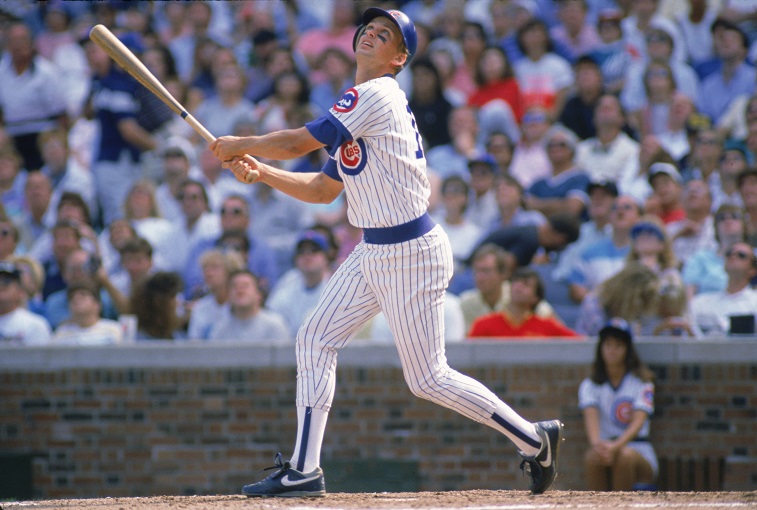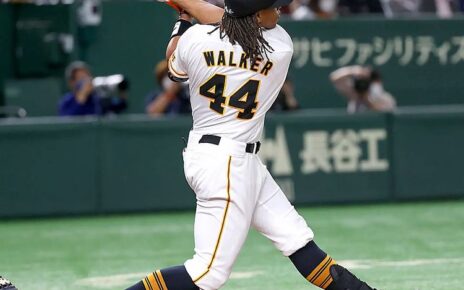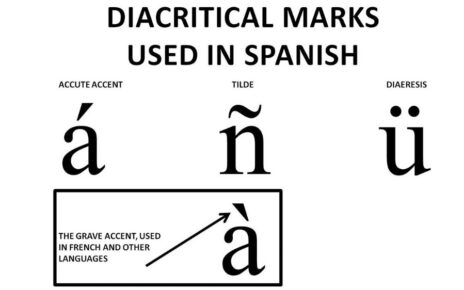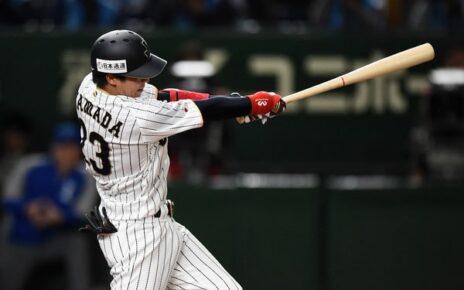A couple of months ago Baseball Prospectus introduced their new hitting metric, Deserved Runs Created+ (DRC+). Being someone who tends to value their statistics, I dug into the metric right away. It is similar enough to the metric I had been using to gauge hitters, Fangraphs’ Weighted Runs Created+ (WRC+) that the learning curve was much easier than when I first got into advanced stats a few years back. There were some key differences though, differences that fascinated me.
WRC+ takes into account park factors, but the park factors of DRC+ are far more malleable. The metric isn’t just looking at the results in a park, it is predicting how that park will continue to play over time. The biggest nuance in DRC+ is that it takes into account the pitcher a batter is facing. A double off of Kyle Hendricks is worth more than a home run off of Brett Cecil. To some, this is an exotic change, but I think it is a necessary addition to how we gauge hitters.
The folks at Baseball Prospectus don’t want DRC+ to be viewed as an end all and be all stat. It’s not; DRC+ is part of a package, grouped together with other statistics to deliver a better idea of the quality of a player beyond just the surface level. This new statistic hasn’t made WRC+ obsolete, and it’s not better than Fangraphs’ hitting metric, but I have come, in a very short time, to value DRC+ more than I do WRC+. I still look at WRC+, it is a very valuable statistic that also helps to paint the picture of a player. My preference is DRC+, but it’s just that, my preference.
With my bias being exposed, I thought it would be a fun exercise to look at some recent, and notable seasons, to see how DRC+ changes the landscape for hitters on my favorite team, the Chicago Cubs. It is funny, looking through the numbers, how often DRC+ matches up with what I thought of a player. WRC+ and I were often at odds. But that is far less the case with DRC+, Javier Báez in 2018 be damned.
Let’s take a trip back to 2016 and see how our view of the World Series champion Cubs would change.
WRC+
| 1. Kris Bryant | 148 |
| 2. Anthony Rizzo | 145 |
| 3. Dexter Fowler | 129 |
| 4. Willson Contreras | 126 |
| 5. Ben Zobrist | 124 |
| 6. Jorge Soler | 106 |
| 7. David Ross | 101 |
| 8. Addison Russell | 95 |
| 9. Javier Báez | 94 |
| 10. Matt Szczur | 87 |
DRC+
| 1. Anthony Rizzo | 140 |
| 2. Kris Bryant | 139 |
| 3. Ben Zobrist | 122 |
| 4. Dexter Fowler | 114 |
| 5. David Ross | 104 |
| Willson Contreras | 104 |
| 7. Jorge Soler | 99 |
| 8. Miguel Montero | 93 |
| 9. Addison Russell | 92 |
| 10. Javier Báez | 90 |
In this sampling, a few things are made clear. First, it is understated how much this Cubs offense depends on a quality leadoff hitter. Dexter Fowler was above average in DRC+, and great according to WRC+. He set the table, and the Cubs offense hasn’t been the same since they lost someone at the top of the order who had both a good eye and good bat-to-ball skills. It’s also abundantly clear that DRC+ simply does not like Báez. Even in a season where he appeared to be very average across the board, and WRC+ says as such, DRC+ has him pegged as bordering on poor.
One of the Cubs other catchers in 2016 was Miguel Montero. If WRC+ is to be believed he was a detriment to the team, his total of 83 not making the top 10, and residing right on that poor border. DRC+ is much more kind to the former Cubs catcher, improving him 10 points and marking him as a slightly below average hitter. A lot of us were fond of piling on Miggy as 2016 wore on and accusing him of adding very little beyond leadership to the team. Perhaps we were wrong and he provided nearly adequate offensive production along with leadership?
The last time the Cubs were a dominant team was in 2008. During the regular season, they were the cream of the crop, torching the National League en route to a 97-64 record. The joy over that team was shortlived as they were swept in the Division Series by the Los Angeles Dodgers. How does the 2008 roster stack up?
WRC+
| 1. Jim Edmonds | 136 |
| 2. Mike Fontenot | 134 |
| 3. Aramis Ramírez | 129 |
| 4. Mark DeRosa | 121 |
| 5. Geovany Soto | 120 |
| 6. Alfonso Soriano | 117 |
| 7. Derrek Lee | 111 |
| 8. Reed Johnson | 101 |
| 9. Ryan Theriot | 99 |
| 10. Kosuke Fukudome | 91 |
DRC+
| 1. Aramis Ramírez | 134 |
| 2. Alfonso Soriano | 126 |
| 3. Geovany Soto | 122 |
| 4. Mark DeRosa | 120 |
| Mike Fontenot | 120 |
| 6. Jim Edmonds | 115 |
| 7. Derrek Lee | 113 |
| 8. Ryan Theriot | 102 |
| 9. Kosuke Fukudome | 97 |
| 10. Reed Johnson | 96 |
The 2008 Cubs really were an offensive juggernaut. Whether one is using WRC+ or DRC+ the end result is a team that fielded seven well above average hitters. The name that sticks out to me the most is Jim Edmonds. To this day I don’t think Cubs fans give him his due for how outstanding he was while with the Cubs. His DRC+ is 21 points fewer than his WRC+, but, he was still well above average in either metric.
That Aramis Ramírez is thought so highly of isn’t surprising, he is an all-time Cubs great who never got that sort of recognition when he played here. What really surprises me is Mike Fontenot and his ungodly WRC+ which is lowered to a respectable above average number by DRC+. I liked Fontenot when he played on the North Side, but I never realized how far above himself he played in 2008.
The last year I’m going to dig into is 1989, the year that a team of misfits led by Don Zimmer made plenty of Cubs fans happy.
WRC+
| 1. Dwight Smith | 148 |
| 2. Mark Grace | 142 |
| 3. Ryne Sandberg | 139 |
| 4. Lloyd McClendon | 136 |
| 5. Andre Dawson | 110 |
| 6. Jerome Walton | 103 |
| 7. Shawon Dunston | 95 |
| 8. Mitch Webster | 93 |
| 9. Domingo Ramos | 86 |
| 10. Vance Law | 82 |
DRC+
| 1. Mark Grace | 141 |
| 2. Ryne Sandberg | 136 |
| 3. Lloyd McClendon | 132 |
| 4. Dwight Smith | 119 |
| 5. Andre Dawson | 112 |
| 6. Mitch Webster | 96 |
| 7. Shawon Dunston | 92 |
| 8. Jerome Walton | 91 |
| 9. Vance Law | 85 |
| Domingo Ramos | 85 |
The first thing that stands out is that WRC+ loved them some Dwight Smith. He’s above average according to DRC+, but WRC+ has him as one of the best players in the whole of the National League. Smith didn’t strike out much in 1989, and that is most likely what worked in his favor. His lack of hitting into double plays was also a boon. In 1989 Smith was one of the best players on the Cubs, and easily better than Jerome Walton who stole the National League Rookie of the Year award from him.
For the most part, DRC+ and WRC+ are in agreement about the 1989 Chicago Cubs. They were a team full of hitters who walked more than they struck out, and while not loaded with a lot of power they weren’t reliant on singles to get the job done. DRC+ does make the compelling case that Walton was an entirely subpar player, and the more I dig into Walton the more it is clear that his speed on the basepaths pulled the wool over everyone’s eyes.
DRC+ isn’t drastically diverting what WRC+ has already told us. In some cases, sure, there are players who have major shifts. They aren’t many though, and more often than not the two metrics are on the same page. What DRC+ does is to add a bit of fine tuning to WRC+ that I appreciate. That’s why I prefer DRC+ and have begun to use it as one of my primary statistics for breaking down players. Looking at the Cubs teams I did here I believe DRC+ does give a better indicator of who contributed the most to those teams offensive success. As well as those hitters who were detrimental, no matter how fond I may be of them in my memory. DRC+ is here to stay, at least until a metric that can better predict and associate comes along, and I plan to make good use of it in the present, the past, and the future.
Lead photo courtesy of Jonathan Daniel – Getty Images




